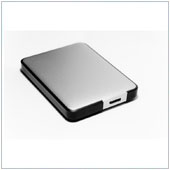
On the surface, the files and folders of both Windows and Mac do the same thing and are relatively similar. The main difference comes in the file systems that are used by operating systems to control how information is stored on and retrieved from hard drives. This information is represented to users as a file structure – files and folders – which makes it possible for us to use the data and information.
While it makes perfect sense to have only one type of file system, there are actually over 20 in use today. The most popular are:
- HFS+ – The main file structure used by Mac’s OS X. All Mac hard drives on which the OS is installed are formatted using this structure. Windows does not natively support this file structure, meaning that when you plug a hard drive formatted with HFS+ into a Windows machine, Windows will not be able to read it without first installing a third party app.
- NTFS – The main file structure preferred and recommended by Windows. OS X machines can read files and information on NTFS formatted drives, but they cannot write (transfer) files onto them.
- FAT32 – An older file system that is supported by both Windows and OS X. This means that both systems can read and write files to drives formatted using this system. The limitation of FAT32 is that it has trouble supporting files larger than 4GB in size.
- ExFAT – A newer version of FAT32, sometimes referred to as FAT64. This system was developed to eliminate the file size limitations of FAT32. Windows systems can support this system, as can Mac systems running OS X 10.6.5 and above.
Because OS X and Windows don’t support the other’s main file system, it is advisable to ensure that you format your external hard drives and USB drives to be either FAT32 or exFAT. The optimal choice would be exFAT.
How to format your external hard drive or USB on a Mac
If your company uses both Windows and Mac machines, or if you would like to be able to transfer files between both types of systems using an external drive, you should first format the drive so that it can be read by both systems. Here’s how to do this on a Mac:
- Plug in the drive you would like to format.
- Click on the Magnifying glass in the top-right of the window and type Disk Utility.
- Open Disk Utility by clicking on it from the results and select the drive you would like to format.
- Select Erase from the box on the right.
- Click on the button beside Format and select ExFAT.
- Enter a name for the drive in the box beside Name, left-click on Erase and follow the prompts.
Warning: Before you format any drive, you should be sure that there are no files you need or would like to keep because they will be erased and will be unrecoverable.

